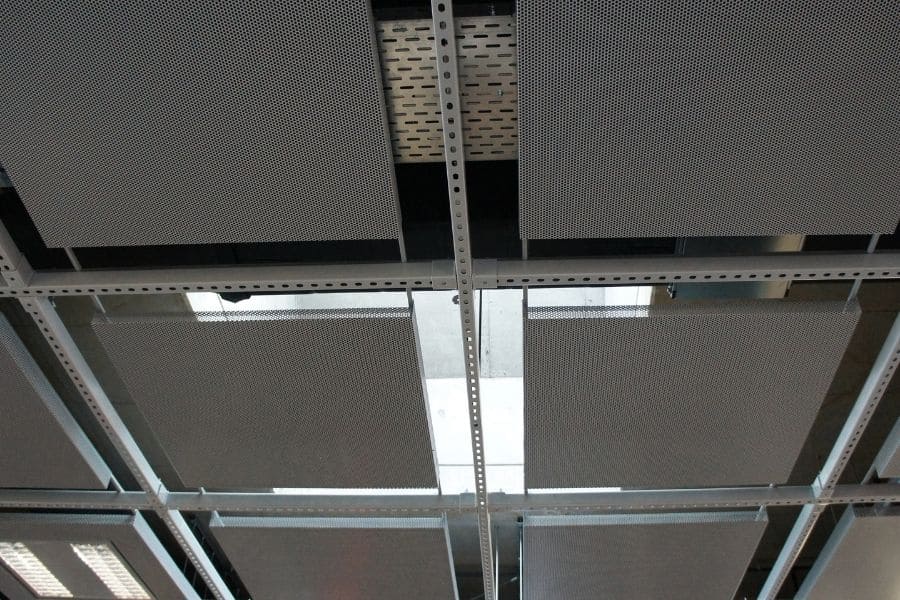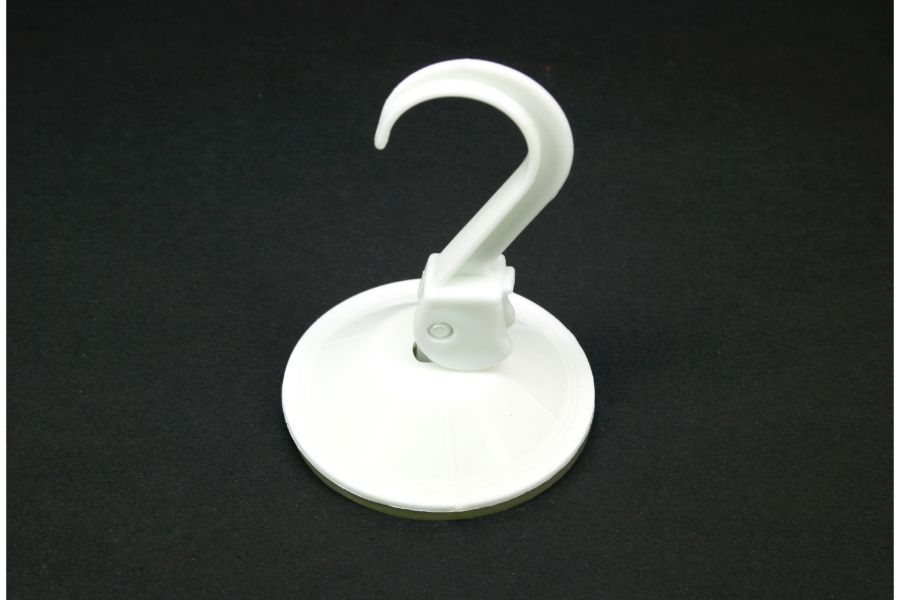If you want to add greenery to your home, there are several ways you can do it. One way is to buy a potted plant and put it on a surface. Another option is to hang plants from the ceiling. However, there are a few things you should know before you start hanging your plant.
A simple way is to drill a hole into the ceiling and then hang your plant from there. But what if for whatever reason, you do not want to drill into the ceiling?
Today I’m going to show you how to hang a plant from the ceiling without drilling holes in it.

This page contains affiliate links, and as an Amazon Associate we earn from qualifying purchases which means we receive a small commission when you make a purchase, at zero cost to you.
How Can You Hang Plants from a Ceiling without Drilling?
While hanging plants from the ceiling without drilling is difficult, it is possible. Some old-fashioned DIY methods, along with technology, can be used to accomplish this task. Here are some of the options for hanging plants from ceilings without drilling.
With some creativity, you can find some unique yet interesting ways to make your plant displays stand out. There is nothing wrong with using some innovative ideas that don’t involve drilling holes all over the place!
How to Hang a Plant from the Ceiling Without Drilling
1. Use a Magnetic Hook

Many apartment buildings, especially in urban settings have exposed metal beams. These beams make excellent plant hangers without drilling. You can hang a lot of heavier loads with the new technologies in magnets. Some of those magnets can hold up to a hundred pounds.
If you live in an apartment building that is a converted industrial or warehousing facility, you may not need to look very far for a metal beam in the ceiling. Many of these types of buildings retain the industrial look with exposed support beams in the ceilings. In some cases, you might not be so fortunate.
You might need to investigate to find the metal beam in your apartment. Some are covered by decorative coverings, some are hidden behind other items, etc. Some magnetic hooks are powerful enough to hold the weight of a plant through thin coverings that may hide them.
Finding hidden beams can often be as simple as using a magnet. Simply slide the magnet across the surface where you suspect beams may be hidden. You will know quickly if there is a beam ready to hold the magnet. Once you found the beam, others should also be regularly spaced across the room.
2. Make Use of Drop Ceilings

Drop ceilings are often used in apartments converted from older buildings. These drop ceilings consist of metal grids into which ceiling panels fit. If you live in such an apartment, you don’t have a problem at all.
Drop ceilings have special hooks that attach to the tracks in the support grid. The next time you go to your favorite retail store, observe the signs hanging from the drop ceiling. These signs are most likely hung on this type of hook.
3. Use a Carpenter’s Clamp

Woodworkers often use carpenter’s clamps to attach materials together. The clamp features a squeezable trigger to tighten the clamps. The clamp bar that extends from the back of the clamp trigger is ideal for hanging plants from stub walls.
Stub walls are short segments of walls that divide or define a space. Your home or apartment may have stub walls. You may find stub walls at the end of built-in bookcases or kitchen cabinets. They make excellent places to hang plants.
The carpenter’s clamps are designed to be used without marring or marking the material they are holding, so you can safely clamp them onto a stub wall, tighten the clamps and use the protruding bars as plant hangers.
They can also be used on door openings that don’t have a door, as they fit over door trims and onto the wall. Or, you can use a C-Clamp to create a more industrial look.
4. Use an Adhesive Hook

Manufacturers now offer a wide variety of hooks that can be attached to almost any surface and then removed without damage. These hooks come in many designs, including plastic, metal and other materials. Some hooks hang vertically while others hang horizontally. Lightweight plants can be hung from the ceiling with this type of hook.
When hanging plants from ceilings, apply them vertically. Make sure the surface is not dusty, dirty or greasy. Follow the instructions on the package. If the plant you’re hanging is more than 50% of the rated capacity, don’t hang it until 24 hours after application. The adhesive needs time to fully cure before the full weight can be applied.
5. Use a Tension Rod

You can also avoid having to drill holes into your ceiling by using a tension rod. These rods are typically used for holding things up, such as clothes, curtains, or partitions.
If your home has a skylight or other openings in the ceilings, then you can hang plants using screw- or spring-operated tension rods.
To install spring-operated tension rods, you must compress the spring inside the rod. You then place the rod across the opening and release the spring into position. On the end of the rod are rubber caps that do no damage to the finish and can support the weight of multiple plants.
For larger openings, a screw-operated tension rod may be a better choice. These do not have springs. Instead, they have a screw mechanism that lengthens the rod as necessary. This type of mechanism can hold heavy curtains and drapes and can certainly support the weight of a few potted plants.
Before purchasing, check the weight limit of the rods to make sure they can carry the weight of the plants after watering.
6. Use a Suction Cup Hook
To hang plants outside on the porch or inside the house, you can use specially designed suction cup hooks that work well for lightweight hanging plants. You can use them in various ways to hang plants in your window or from a skylight.
These work well when hanging from glass, metal, and other smooth surfaces and are a great way not to make holes in the wall and ceiling. Another thing is that you can hang a weight of up to five pounds using suction cup hooks.
Conclusion
In conclusion, there are several methods available to hang plants from ceilings without drilling. However, if you want to keep costs down, consider buying some inexpensive tools like magnetic hooks, adhesive hooks, and tension rods instead of expensive equipment like carpenter’s clamps.
Each of the methods above offers its own advantages and disadvantages. It all depends upon what kind of space you want to decorate and how much money you want to spend.


